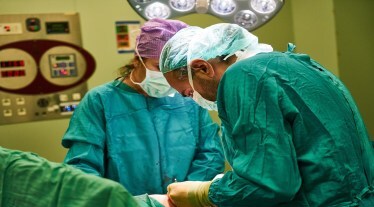Revenue of private hospitals is seen growing at a healthy 11-12 percent in fiscal 2025 after an estimated 14 percent growth in fiscal 2024, CRISIL Ratings said on Tuesday. Good occupancy levels on enhanced capacities and steady uptick in average revenue per occupied bed (ARPOB) will be the tailwinds.
According to a report by the rating agency, a rising share of medical tourism and increasing health insurance coverage will be supportive as well, contributing to better bed-utilisation and ARPOBs.
Operating profitability is likely to sustain at a healthy 16-17 percent in fiscal 2025 with better operating leverage offsetting a ramp-up in cost associated with newer capacities.
According to CRISIL, this will ensure cash generation remains strong and reliance on external debt is limited even as capex spending remain sizeable. That, in turn, will keep credit profiles stable.
“An analysis of 89 companies rated by CRISIL Ratings, accounting for two-thirds of the revenue of large private hospitals and a combined revenue of ~Rs 46,700 crore, indicates as much,” the firm said in a statement.
“Healthy demand for healthcare services, including due to increased awareness of lifestyle treatments, rising medical tourism and increasing health coverage will ensure bed occupancy is sustained at 60-62 percent even on significantly enhanced capacities in fiscal 2025. In addition, ARPOB, which is estimated to have grown ~8 percent to ~Rs 36,000 in fiscal 2024, will rise to ~Rs 38,000 in fiscal 2025 supported by higher share of specialised surgeries and pass-on of inflation linked costs. These factors should spawn double-digit revenue growth for private sector hospitals this fiscal,” Anuj Sethi, Senior Director, CRISIL Ratings said in a statement.
Medical tourism, which accounts for ~10-12 percent of revenue, is expected to grow at almost twice the overall rate in the near to medium term. Lower treatment costs, world-class facilities and skilled personnel will drive the inflow of medical tourists, particularly from south-east Asia and Middle East. They comprise ~80 percent of India’s overall medical tourist arrivals.
According to the report, medical tourists are expected to surpass pre-pandemic highs of ~70 lakh this calendar year. Moreover, rising insurance coverage — total gross health insurance premiums continued to grow at over 20 percent in the past two fiscals — is making quality treatment more accessible.
“Besides increasing instances of lifestyle diseases, rising share of ageing population means demand for healthcare services will keep growing. Ergo, hospital chains are seen adding 2,000-2,500 beds in fiscal 2025 after an estimated ~2,000 beds in fiscal 2024. Taken together, that will be ~50% of what was added in the six fiscals ended 2023, reflecting strong investment momentum among private hospitals. Continuing strong demand will ensure bed occupancies is maintained at healthy levels. Notably ~60% of the bed additions are planned in Metros/Tier-I cities of recognized medical tourism hubs of Northern and Southern India,” the agency revealed.
Key reasons driving this trend are well-established infrastructure, availability of doctors and nurses, higher paying capacity of patients, and good connectivity, it stated.
“Higher revenue and operating margin will ensure strong cash accrual, which will help fund more than 65% of the total planned capex of ~Rs 4,500 crore by private hospitals in fiscal 2025. This, in turn, will lend stability to credit profiles. We expect debt protection metrics such as the interest coverage and the total debt/Ebitda ratios of CRISIL Ratings rated entities to remain in line with fiscal 2024’s levels of 6.2 times and 1.7 times, respectively,” Poonam Upadhyay, Director, CRISIL Ratings said.
While business prospects seem promising for private hospitals, what will bear watching is the sustainability of occupancy levels at higher capacities and any material impact of regulations on these hospitals, the rating agency revealed.
